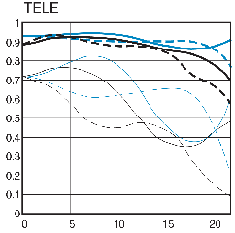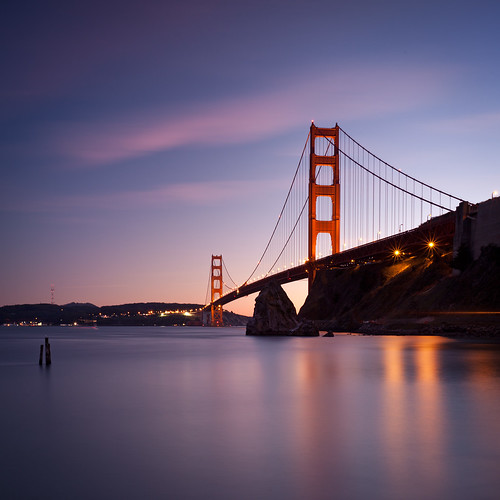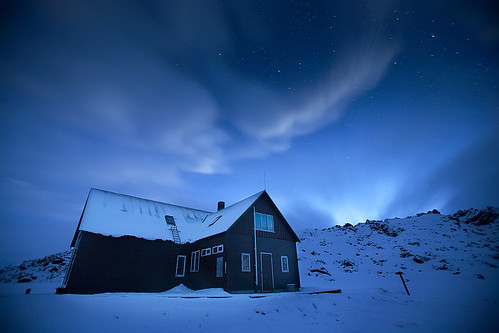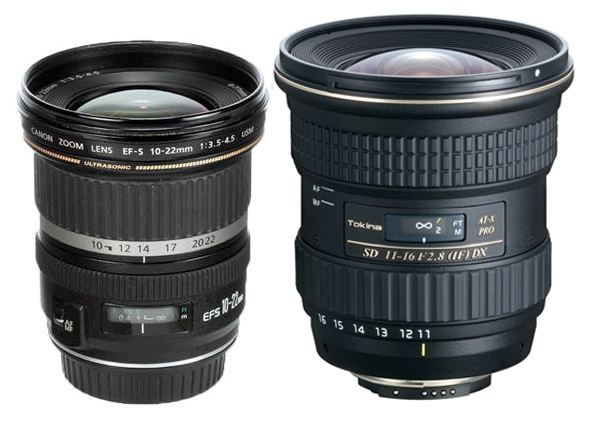Content
- Introduction
- Canon EF 16-35mm f/2.8L II USM Ultra Wide Angle Zoom Lens
- Canon EF 50mm f/1.8 II
Get it now
Canon EF 16-35mm f/2.8L II USM Ultra Wide Angle Zoom Lens

Canon introduced Canon EF 16-35mm II lens to replace the 16-35mm f/2.8L I lens. The original 16-35mm produces sharpness in the center but has a number of issues including softness and CA (chromatic aberrations) in the corners. These imperfections are more noticeable on full-frame Canon DSLR cameras. Among the many “fixes” Canon made, they changed the filter thread size from 77mm to 82mm.
Note that on a cropped sensor DSLR this lens is equivalent to a focal length of 25-56mm.
The build quality of the Canon EF 16-35mm f2.8 II lens is great. Its zoom and focus rings are easy to use and are in right place. With a 2.8 aperture throughout its focal range, it is well suited for shooting in low light conditions.
If you don’t need a 2.8 aperture lens, a good alternative is the Canon EF 17-40mm f/4L.
If you need a lens with the specific range from 16mm up to 35mm at a lower cost, then there are prime lenses that may meet your needs such as the new Canon EF 24mm and 28mm 2.8 IS lenses among others.
[spoiler style=”2″ title=”Pros & Cons”]| PROS | CONS |
|---|---|
| Sharpness for zoom lens | Barrel distortion (at 16mm) |
| Quiet, fast and accurate AF | Vignetting (f2.8 at 16mm) |
| Constant results | |
| Build quality Weather (water) sealing |
| Performance | |
|---|---|
| Focal Length | 16-35mm |
| 35mm equivalent FL (APS-C) | 25-56mm |
| Aperture | Maximum: f/2.8 Minimum: f/22 |
| Camera Mount Type | Canon EF |
| Format Compatibility | 35mm Film / Full-Frame Digital Sensor Canon (APS-C) |
| Angle of View | 108° – 63° |
| Angle of View (APS-C) | – |
| Minimum Focus Distance | 0.28m (0.92ft) |
| Magnification | 0.22x (1:4.5) |
| Groups/Elements | 12/16 Super Spectra coatings 3 aspherical elements 2 UD elements |
| Diaphragm Blades | 7 circular |
| Features | |
| Image Stabilization | No |
| Autofocus | Yes |
| Distance scale | Yes |
| DoF scale | Yes |
| AF motor type | Ring-type USM |
| Focus – Zoom methods | Internal |
| Tripod Collar | No |
| Physical | |
| Filter Thread | 82 mm |
| Dimensions (DxL) | Approx. 89 x 112mm (3.48 x 4.39 in) |
| Weight | 635g (1.40 lb) |
| Included accessories | Front and rear caps Hood |
| Other | Metal barrel, metal mount Weather sealing |
- Landscape / Scenery
- Low light conditions
- Weddings
- Video
- Portrait
- Photojournalism
- Indoors
- Architectural Interiors
| Lens | W | MFD | MM | Filter | DB | Year | Price |
|---|---|---|---|---|---|---|---|
| Canon EF 16-35mm f/2.8L USM | 600g 1.32lb |
0.28m 11.02in |
0.22x | 77mm | 7 | 2001 | used only |
| Canon EF 17-40mm f/4L USM | 500g 1.10lb |
0.28m 11.02in |
0.24x | 77mm | 7 | 2003 | $839,00 |
| Tokina AT-X 16-28mm f/2.8 Pro FX | 950g 2.09lb |
0.28m 11.02in |
0.19x | – | – | 2010 | $849,00 – rebate $50 ($799,00) |
| Tamron SP AF 17-50mm f/2.8 XR Di II | 430g 0.95lb |
0.27m 10.63in |
0.22x | 67mm | 7 | – | $474,00 |
| Sigma 17-50mm f/2.8 EX DC OS HSM | 565g 1.25lb |
0.28m 11.02in |
0.28x | 77mm | 7 | 2010 | $669,00 |
| Tokina 17-35mm f/4 Pro FX | 600g 1.32lb |
0.28m 11.02in |
0.20x | 82mm | 7 | – | $659,00 |
| Canon EF-S 10-22mm f/3.5-4.5 USM | 385g 0.85lb |
0.24m 9.45in |
0.17x | 77mm | 6 | 2004 | $819,00 |
| Sigma EF-S 10-20mm f/3.5 EX DC HSM | 520g 1.14lb |
0.24m 9.45in |
0.15x | 82mm | 7 | – | $649,00 |
| Tamron EF-S SO AF 10-24mm f/3.5-4 Di II | 406g 0.90lb |
0.24m 9.45in |
0.19x | 77mm | 7 | – | $449,00 |
| Tokina EF-S 11-16mm f/2.8 AT-X 116 Pro DX | 560g 1.23lb |
0.30m 11.81in |
0.08x | 77mm | 9 | 2012 | $659,00 |
| Canon EF 24-70mm f/2.8L USM | 950g 2.09lb |
0.38m 11.81in |
0.29x | 77mm | 8 | 2002 | $1.329,00 |
| Canon EF 24-70mm f/2.8L II USM | 805g 1.77lb |
0.38m 11.81in |
0.21x | 82mm | 9 | 2012 | $2.299,00 |
| Tamron SP 24-70mm f/2.8 DI VC USD | 825g 1.82lb |
0.38m 11.81in |
0.21x | 82mm | 9 | 2012 | $1.299,00 |
| Sigma 24-70mm f/2.8 IF EX DG HSM | 790g 1.74lb |
0.38m 11.81in |
0.19x | 82mm | 9 | 2008 | $899,00 |
| Canon 24-105mm f/4L IS USM | 670g 1.48lb |
0.45m 17.72in |
0.23x | 77mm | 8 | 2005 | $1.149,00 |
| Lens | Pros | Cons |
|---|---|---|
| Similar focal range Alternatives | ||
| Canon EF 16-35mm f/2.8L USM | Price | Soft in corners Flaring Vignetting CA Only used |
| Canon EF 17-40mm f/4L USM | Price Smaller filter size 77mm Same or better sharpness |
slower (f/4 vs f/2.8) |
| Tokina AT-X 16-28mm f/2.8 Pro FX | Should be sharper Price |
Auto-focus inconsistent Build quality |
| Tokina 17-35mm f/4 Pro FX | Price | Auto-focus inconsistent Build quality Focus speed Focus sound Sharpness f4 vs f2.8 |
| Similar price and focal range Alternatives | ||
| None | – | |
| From FF to APS-C Alternatives (16-35mm->~10-22mm)* | ||
| Canon EF-S 10-22mm f/3.5-4.5 USM | Price | Slower (f/3.5-4.5) Softer More distortion Build quality Not weather proof |
| Sigma EF-S 10-20mm f/3.5 EX DC HSM | Price | Slower (f/3.5) Softer More distortion Build quality Not weather proof |
| Tamron EF-S SO AF 10-24mm f/3.5-4 Di II | Price | Slower (f/3.5-4) Softer More distortion Build quality Not weather proof |
| Tokina EF-S 11-16mm f/2.8 AT-X 116 Pro DX | Price | Softer More distortion Build quality Not weather proof |
| From APS-C to FF Alternatives (16-35mm->~25-56mm)** | ||
| Tamron SP AF 17-50mm f/2.8 XR Di II | Price Filter (77mm) |
Build quality No full time focus Slower focus |
| Sigma 17-50mm f/2.8 EX DC OS HSM | Price Filter (77mm) |
Build quality No full time focus Slower focus |
| Canon EF 24-70mm f/2.8L USM | Price | Little softer |
| Canon EF 24-70mm f/2.8L II USM | More blades – 9 Zoom lock |
Price |
| Tamron SP 24-70mm f/2.8 DI VC USD | Price Zoom lock Image stabilization |
Vignetting |
| Sigma 24-70mm f/2.8 IF EX DG HSM | Price | Sealing Sharpness Focus |
| Canon 24-105mm f/4L IS USM | Price Much longer zoom range Image stabilization |
Slower (f4 vs f2.8) Softer |
| Tamron AF 28-75mm f/2.8 XR Di LD Aspherical (IF) | Price Filter – 67mm Zoom lock |
Noise Bokeh No full time manual focus 7 diaphragm blades |
| Prime Alternatives (near range 16-35mm) | ||
| Canon EF 14mm f/2.8L II USM | Prime lenses are in most cases better in all domains than zoom lenses. Most of these lenses are faster than 16-35mm f2.8, most of them are even sharper across frame. It really depends on intended use, cause by it’s purpose, there is no logic to compare Zoom lenses with Primes. You should know what you need before buying such expensive gear. |
While prime lenses have advantage over Zoom, they tend to cost more. Please check disadvantage of each lens separately, some doesn’t have sealing, some are slower, some are worse build quality, some are not as sharp as 16-35mm II, some doesn’t have auto focus (it is not negative, if you plan to use it as video lens) etc. Zeiss lenses are sharper across whole frame, all with manual focus (MF) and great build quality, amazing especially for video. |
| Zeiss Distagon T* 15mm f/2.8 ZE | ||
| Zeiss Distagon T* 18mm f/3.5 ZE | ||
| Canon EF 20mm f/2.8 USM | ||
| Sigma 20mm f/1.8 EX Aspherical DG DF RF | ||
| Zeiss Distagon T* 21mm f/2.8 ZE | ||
| Canon EF 24mm f/1.4L II USM | ||
| Bower 24mm f/1.4 Wide-Angle | ||
| Zeiss Distagon T* 25mm f/2.0 ZE | ||
| Canon EF 28mm f/1.8 USM | ||
| Sigma 28mm f/1.8 EX Aspherical DG DF Macro AF | ||
| Canon EF 35mm f/1.4L USM | ||
| Zeiss Distagon 35mm T* f/2 ZE | ||
| Zeiss 35mm F/1.4 Distagon T | ||
| Sigma 35mm f/1.4 DG HSM | ||
| Canon EF 35mm f/2.0 | ||
| Rokinon 35mm f/1.4 US UMC Aspherical | ||
* Listed lenses are the APS-C (1.6x crop) body alternatives to a field of view equal or close to one that Canon EF 16-35mm f2.8 USM II produces when mounted on FF (full frame) sensor body
** Listed lenses are the FF (full frame) body alternatives to a field of view equal or close to one that Canon EF 16-35mm f2.8 USM II produces when mounted on APS-C (1.6x crop) sensor body
[/su_spoiler]


You can check dpreview MTF-50 + CA chart here.
Sharpness
The Canon 16-35mm f/2.8L II USM zoom lens is sharpest at its center at 16mm and f/2.8, but the best results for overall image quality are around 20-24mm at f/5.6-f/8. The 16-35mm II is the more advanced version of original 16-35mm, but it’s not flawless. Shooting at its widest focal length (16mm) shows some corner softness in images. It is normal to have some distortion with wide angle lenses and the 16-35mm II is no exception.
Furthermore, the MTF Chart WIDE confirms that this lens at its shortest focal length (16mm) and largest aperture (f/2.8) performs quite well but mostly in center of the frame (black thick line). Such performance is good for low light conditions. While stopped down to f/8, it has almost full frame sharp coverage (thick blue line). Landscape users will most often use apertures above f/5.6 and this lens performs quite well within that aperture range.
Chromatic Aberration
From the dpreview chart, it can be shown that CA is not really a big issue for this lens. It is well controlled and shows higher amounts of CA on edges of the frame. These days, CA is easily resolved in post processing.
Vignetting
If this lens is at focal length 16mm, it shows a 2-3 stops fall off at the edges of the frame. When stopping down or zooming in, the light fall off compared to center lags for 1 stop.
Distortion
As expected, at 16mm a large amount of distortion will occur. The level of distortion varies among lenses but on a cropped sensor DSLR body, the average distortion across the frame is around 0.5%. On full-frame cameras, the 16-35mm II shows more distortion, varying from a bit under 1% (barrel average) at 16mm (meaning that in corners it can reach up to 3%) to about 0.5% pincushion from 24-35mm range. At 35mm, the pincushion distortion is less than 0.2% in the corners.
Nevertheless, the level of distortion of this lens is less than that of its predecessor. This is a great improvement as version I has an almost 1% of barrel distortion in the corners at 16mm.
The Canon EF 16-35mm f/2.8L II has its lowest distortion at 28mm on cropped sensor cameras, and around 22 mm on full-frame bodies.
Distortion shouldn’t concern you much, as you can use photography software to correct images, but in case it does bother you, you can always search for Wide Angle prime lenses with less distortion.
Focus
Overall, this is a consistent lens with a short focal length that has a fast and reliable auto-focus.
Out of focus area (Bokeh)
Bokeh produced by this lens is decent but not amazing. It looks circular with some distorted shapes.
Other
When compared to its predecessor, this lens has less flaring because it is built with better optical elements.
Example shots:

http://www.flickr.com/photos/steini06/5023633309


Bottom line for Canon EF 16-35mm f/2.8L II USM Lens
The 16-35mm f2.8 II, a unique wide angle zoom lens is without competition. Usually, primes outperform zoom lenses in image quality and all of the issues mentioned before about this particular lens are expected in all wide angle zoom lenses. This lens has been proven to be the best full-frame Canon wide angle zoom lens. It’s not without imperfections, but is highly versatile with excellent performance. This lens is most commonly used for Landscapes, Architectural Interiors, Low light situations, Weddings, Night Life, Photojournalism and much more. If you know how to use it, this lens can be an amazing addition to your gear.
We recommend that you get your copy of the Canon EF 16-35mm f2.8L USM II lens in one of these stores:

Popular reviews:
Canon EF 16-35mm f2.8 L II USM – KenRockwell
Canon EF 16-35mm f2.8 L II USM – TheDigital Picture
Canon EF 16-35mm f2.8 L II USM – Amazon Reviews
dpreview (data only)
 Canon5Dtips Photography is more than words.
Canon5Dtips Photography is more than words.







